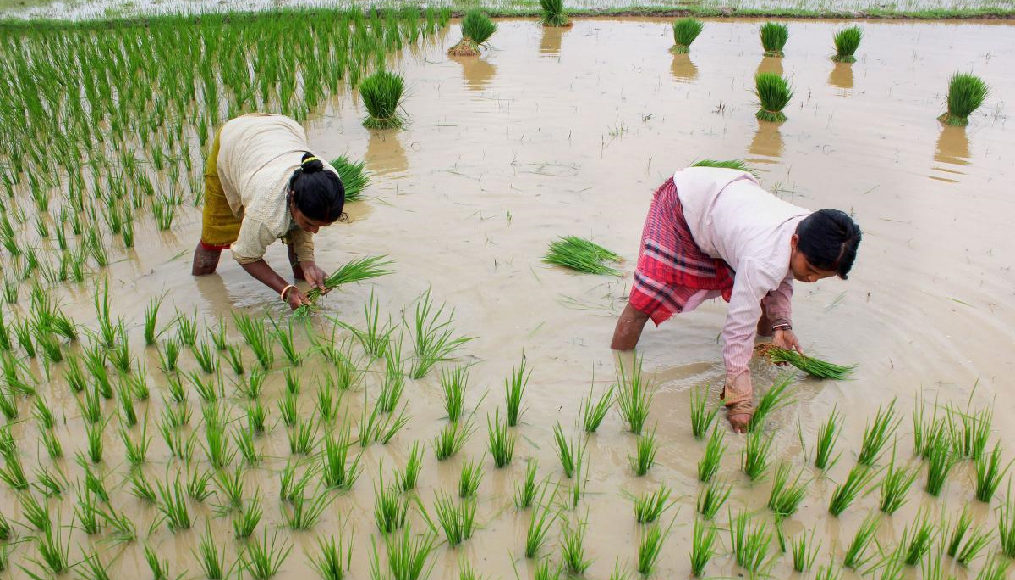
This Kharif season has escaped the impact of the COVID19 pandemic, largely due to enough rains and uninterrupted supply of seeds and fertilizers, which were exempted from the lockdown. Agriculture being backbone of Indian economy government took decisive proactive steps to ensure the agriculture value chain is not affected due to COVID19. The measures taken include relaxed movement of agri-input across borders, concessions on loans, finance package to protect farmers, income support under PM-KISAN scheme, regularization of agri markets, etc. Seed and other agri-input companies also anticipated the disruption in supply chain and have put extra efforts to ensure seed reaches the farmer on time by ensuring last mile delivery. These moves ensured farmers receive seeds and agri-inputs well in time before the start of the Kharif season and the results are already showing on the farms. The government too has set a target to raise the annual food grain production by 2% at 298.3 million tons, comprising 149.92 million tons in Kharif season and 148.4 million tons during Rabi, for the 2020-21 crop year (July-June).
Kharif sowing for this year has a massive increase of nearly 21% as per the corresponding period last year. The area sown is about 70 million ha as on 17th July 2020 against 57 million ha last year at the same time. Major increase is in oilseeds and pulses area which is suggestive for crop diversification and a move towards high value crops
| Crop | Area sown in FY 21 (million ha) | Change over FY 20 |
| Rice | 16.8 | 18.59% |
| Pulses | 8.2 | 32.35% |
| Coarse cereals | 11.6 | 12.23% |
| Oilseeds | 15.5 | 40.75% |
| Sugarcane | 5.1 | 0.92% |
| Cotton | 11.3 | 17.28% |
| Jute & Mesta | 0.7 | 0.70% |
This increase in sowing is majorly due to favorable and timely monsoons this year which was not the case last year. The monsoon has positively impacted majority of the farms but for some farmers it has left negative impact as they are unable to sow the farms because of continuous rains. The other reason for increased sowing is the steps taken by the Ministry of Agriculture after the forecast of good south-west monsoon. Agri-input companies with the support of the ministry arranged timely distribution of fertilizers in all the states and Union Territories to speed-up the Kharif sowing. This has also resulted in increased sales of fertilizers which has jumped by 83% in April-June. Fertilizer sales were recorded at 4 million tons in May 2020 which is twice as compared to May 2019.
The exodus of labour to their villages due to the nation-wide lockdown for COVID-19, resulted timely availability of farm labour which has accelerated the sowing and increased the area under sowing. The other reason could also be increased Rabi procurement due to bumper harvest of oilseeds, pulses and wheat that benefitted farmers through increased farm incomes before start of Kharif! The crops harvest is also expected to be higher as the water in major reservoirs across the country are around 50% more than last year in addition to increased sown area.
Although things look bright for agriculture at this moment, the recent outbreak of locusts in some states has become a cause of concern as the swarm of locusts have the capability to completely wipe off the Kharif production in these states. As per United Nations’ Food and Agriculture Organization (FAO), more locusts’ swarms are expected to reach India in August all the way from Africa. Government has taken some measures with deploying control teams and use of drones and sprayers to ward off this
danger. There are chances of harvest getting affected by other unforeseen vagaries of weather. The crop harvest operations could also be affected by shortage of labour during the harvest period if labour decides to return to cities!
Excess production if not properly managed, may result in loss in different ways – like farmers unable to sell, lack of storage, MSP not remunerative, glut in the market and will lead to the fall in market prices. To ensure that the increase in crop production results in increase in the income for the farmers and kick-start the rural economy, government has come up with some policy level measures. The central government has approved the increase in Minimum Support Price (MSP) for 14 Kharif crops. This dramatic rise in sowing area needs to be met either with an equal increase in government procurement of the commodities or through efficient farmgate infrastructure. These can be addressed by proper implementation of recently announced government initiatives on creation of new Farmer
Producer Organization, integration of mandis with e-NAM, amendment in Essential Commodities Act, agricultural marketing reforms, crop insurance, agri and food processing infrastructure etc. Some export promoting incentives for agriculture-based industries like yarn, textiles, dairy, sugar and soybean processing can spur exports as domestic demand is likely to be subdued. Plentiful harvests are key to rural incomes that can push up rural demand for goods and services in the larger economy; this keeps the manufacturing going and can result in economic revival!!
Author

 Grow Beyond
Grow Beyond 

